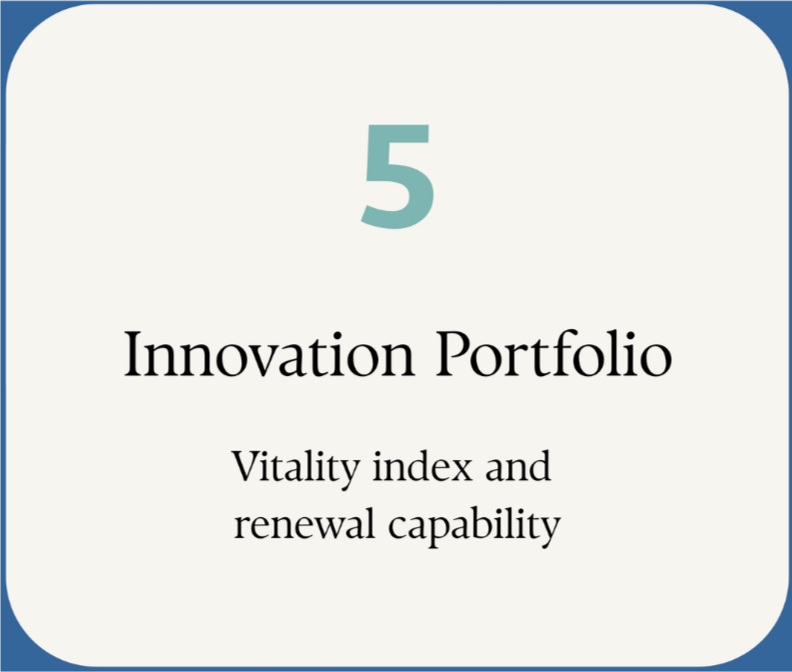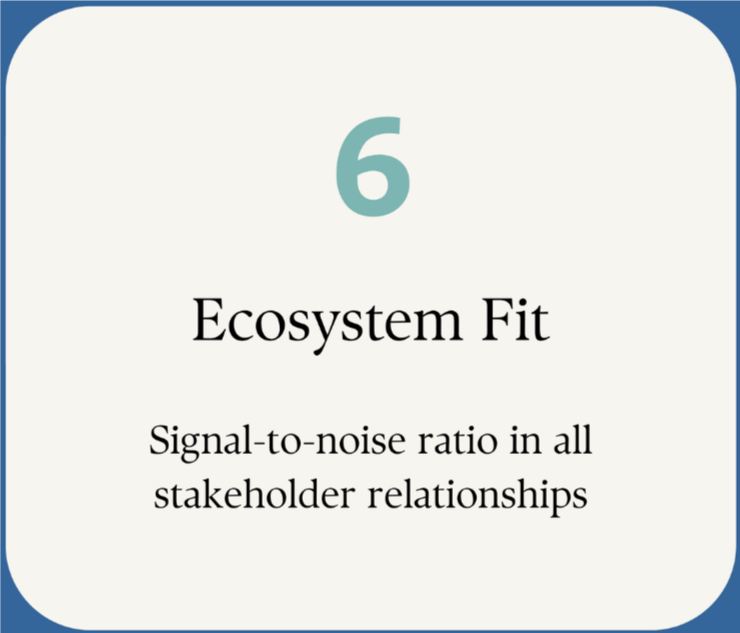About Our Founder
Christopher Skinner
Founder & CEO, Stealth Dog Labs
Pioneer in Predictive Organizational Intelligence
Christopher Skinner has spent over two decades solving one of business's most critical challenges: quantifying the invisible psychological drivers that determine organizational financial stability and success. Combining abstract mathematics, computational linguistics, and strategic business insight, he has created breakthrough technology that predicts company performance by analyzing how people think, decide, and collaborate.
The Innovation:
Remote Psychological Measurement at Scale
Christopher pioneered the ability to remotely measure organizational psychology without surveys, interviews, or invasive assessments.
His proprietary technology analyzes language patterns to evaluate:
Leadership mindset capacity and decision-making quality
Cultural alignment and purpose-driven behavior
Team psychological composition and collaborative effectiveness
Customer psychology and authentic market fit
This creates what he describes as "putting a psychologist inside radar" – enabling leaders to see organizational health and predict performance 6-18 months before traditional metrics reveal the outcome.
Proven Track Record of Transformation
At Oreck, he helped transform $100 million into $400 million. At Performics, he added his technology to an existing platform, turning a third-place marketing software company into a $750 million sale to Google. At Centro, he expanded a baseline of 50 customers to 2,500, converting $50 million in sales into more than $600 million. At Raise, he transformed $30 million in sales into $400 million. At Vodafone, he expanded their online media into an eighteen-country network. At Mokrynski, he transformed the econometrics of a broken business model into a profitable sale for the founder, enabling him to retire. As CEO of SpiderOak, he revitalized a dying company, turning it into National Security Software.
Academic Foundation & Recognition
BS Abstract Mathematics, Louisiana State University
Published author and peer-reviewed researcher in computational linguistics
Three patents in marketing automation and personality-driven analytics
Mentored by Clayton Christensen (Harvard Business School) and leading language psychologists
Amber Hargroder
Our Co-Founder
Amber Hargroder is a writer, strategist, and co-founder of Stealth Dog Labs. A Seth Godin altMBA alum (Cohort 6), she transforms big concepts into tangible results with her “personal mix of intellectual rigor, edgy contrarianism, and no-nonsense pragmatism that’s delightfully disruptive.”
She began her writing career by creating a compendium of knowledge on the Creative Industries and Experience Economy for the Danish Institute for Study Abroad. She then joined The Second City Training Center in Chicago and created successful guerrilla marketing campaigns for numerous storefront theaters, along with her own plays.
Following that, she founded a boutique copywriting firm focused on creating educational content for novel technologies and served as a regular consultant on branding and messaging at the prominent tech incubator 1871. She then went on to work as a branding strategist for luxury ateliers in the bespoke world of menswear, from Optimo Hats to Catella Shoemaker.
Amber has also rebranded a major government institution, helped get a governor elected through strategic op-eds and speeches, published a novel, and wrote compelling emails for a publicly traded company that increased sales by 250%.
Today, Amber assists brands in finding their purpose, aligning their message, and connecting with their audience on a deep, human level using the proprietary technology available only through Stealth Dog Labs.
The Philosophy:
Only 6% Get It Right
Research across 1.3 million organizations reveals a stark reality: only 6% achieve the optimal balance of people and business model that drives sustained outperformance. These companies return 2.9x more than typical performers because they systematically identify and cultivate what Christopher calls "A+ ecosystems" – the right customers, employees, vendors, and leaders working in harmony.
Stealth Dog Labs:
Measuring the Invisible
Christopher's current platform quantifies seven critical organizational dimensions that traditional metrics miss:
The Mission
Christopher's life work addresses a fundamental business reality: while we measure financial metrics with precision, we make people decisions – hiring, promoting, partnering, targeting customers – largely on intuition, experience or non-causal data. His technology changes this by providing the same rigor for human capital that we apply to financial capital.
"The future belongs to organizations that can see around corners," Christopher explains. "We've built organizational radar that detects the psychological patterns predicting success before they show up in quarterly reports."
Beyond the Technology
Christopher brings a unique perspective shaped by mentorship under David Oreck (protégé of media pioneer David Sarnoff) and deep study of disruptive innovation theory as educated by Clayton Christensen. He combines the strategic pattern recognition of abstract mathematics with practical business leadership, having served as CEO, Chief Innovation Officer, and strategic advisor to organizations ranging from startups to large multi-national organizations.
His approach transcends traditional technology by providing CEOs with what he calls "asymmetric data" – insights competitors cannot easily replicate, enabling faster, more confident decisions about the human elements that ultimately determine organizational destiny.
A Tale of Two Dads
A personal story by Christopher Skinner, Founder & Inventor
Have you ever been involved in a company that feels like a living, breathing rocket ship? Where everything is harmonious, everyone knows their role, and the momentum is absolutely thrilling?
That was my dad’s company in the 1970s. Louisiana was buzzing with opportunity, with businesses across the South investing in the state as it became increasingly business-centric. There was massive growth and confidence, especially along the Mississippi River, where my father engineered enormous projects meant to modernize manufacturing, shipping, and energy. He personally worked on hundreds of these projects, including the Strategic Petroleum Reserve in St. James Parish and the Kaiser Aluminum barge and ship handling facilities to container cranes for the Port of New Orleans and nine out of ten grain elevators along one of the most important rivers in the nation. My father had a respectable share of this sizable business, which employed around 500 people manufacturing enormous machines, equipment, and barges on acres of land.
As a kid, this was my playground. My father would take me with him to work on Saturdays, when the yard was quieter, and let me crawl through the pipes, sit at the computers, and tinker in the shop. Every photograph from my childhood captures a father deeply involved in my upbringing. He was always around, taking me fishing, teaching me how to navigate, letting me tow the boat in our big truck. He provided a sense of controlled responsibility, often putting me in situations where the risk had been removed as much as possible so that I could make mistakes, take chances, and learn. And even when I did make a mistake, there was no judgment, no fear, no screaming. My father was my mentor, constantly teaching me how to build, fix, and create. But when I started my sophomore year of high school, all of that disappeared.
As a teenager, my father’s absence was a jolt to my system. He no longer had time for fishing, or roadtrips, or birthdays. Instead, he was trying to save his business as the tides turned for our State. Bad decisions in Washington, D.C., and even Baton Rouge led to increased spending, feeding the beast of inflation and driving up interest rates. When business was good, and projects were coming in, no one had considered that loans for heavy machinery would become a problem. But when the business was plunged into uncertainty, the interest rates on those loans brought prosperity to a screeching halt.
That was when the more intuitive executives jumped ship. They fled manufacturing, chemical plants, and refineries for the more agile realms that functioned independently of manual labor and huge amounts of capital. In the void left behind, positions were filled by lower-quality and lower-capacity individuals who were more Opportunistic, more Disciplined, and far less Results-oriented. These people made lower quality decisions, and turned a living, breathing rocket ship into a miserable pit of dysfunction.
Unfortunately, my father stayed. Having worked in engineering his entire career, he assumed it would rebound quickly, that the good times would soon return. But as the quality of the people within his company and clients radically changed, so did its output. There had been twenty projects slated to be completed, each requiring years to build. My father stubbornly refused to quit and move on, staying loyal to a company that no longer existed. He assumed the customers would stay onboard, that the work would come back, and that he would ultimately complete these projects; but instead, it all dried up. And rather than file for bankruptcy, his company simply shut down.
During this time, my father became a completely different person. He couldn’t come to terms with what had happened, and he couldn’t snap out of his shock either. He became frustrated. He complained more and more. And then he started drinking. The dysfunction of work followed him home. There was no more mentorship. The father I had known had disappeared along with our fishing trips. And it would take five years for him to emerge from the fog, and even longer for him to make peace with his situation.
By then, he had reconfigured the company away from building new construction into maintaining what he had built previously. This, of course, attracted even more low-level talent to the industry, making it impossible to maintain the standard set before the crash. As my mother used to say, he kept “trying to turn a sow’s ear into a silk purse.” But when I asked him why he had stayed, he replied, “I love this work.” It was what he had done his entire life—except it was no longer the thrilling, challenging work of the ’70s. As a result, his home life suffered just as much as he was undoubtedly suffering internally for being in the wrong business, at the wrong time, with the wrong people.
When I set out to build my first business, I was determined not to make the same mistakes. I went all-in on small teams, agile tech, and low investment. I had naively assumed that technology could solve all problems and help me avoid the same pitfalls. But as I ventured more into executive roles, I realized that most of the problems faced by businesses are in fact people problems—not technical ones. And it was people problems that had kept my father from going fishing, from teaching me more, from being present at home. And that’s why I created this supercomputer.
I basically created a way to save my Dad so we could go fishing again, if only time travel were possible. If I’d had the technology then, I could have warned my father that the twenty projects would never be built, that the sophisticated work he excelled at was shifting elsewhere, and that the people around him would make him miserable due to their inherent dysfunction.
But the truth is, the effects of bad business environments aren’t isolated to our desks. They follow us home, keep us from birthday parties and school plays, strain our marriages, and cause our fishing poles to collect dust. It’s people problems that rob us of reaching our full potential, of fulfilling our life’s purpose, and finding meaning in our work. As a sign I once saw put it, ‘This is not your practice life.’ You don’t get another shot at this. You don’t get more opportunities to make memories with the people you love. And suffering for decades with the wrong people, doing the wrong work, in the wrong place doesn’t really serve anyone. Because if you don’t have the bandwidth for quality time, are you even living a quality life?
Our technology helps you see the truth of your situation, identifies your best path forward, and clarifies your value so that you don’t have to sacrifice your sanity, life-force, or memories in pursuit of the wrong thing.
As we like to say, drama is for the page and the stage—not your working life. We make that a reality, starting with a phone call.









